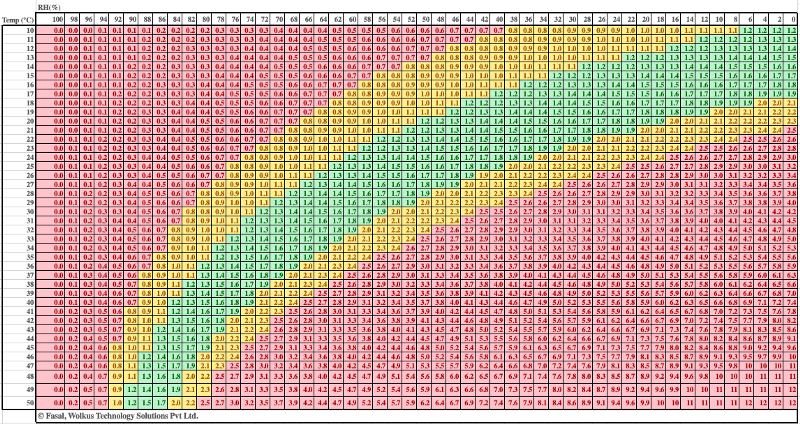- Canada’s Growing Zones Are Changing 2024 - January 12, 2024
- Attracting Wildlife To The Garden - May 16, 2023
- How To Garden Near A Septic Tank - May 9, 2023
I’m about to tell you the ultimate secret when it comes to getting huge houseplants or rapid growth from houseplants. Wanting houseplants that grow quickly? You definitely want to look up vapour pressure deficit. This is especially true if your growing your house plants in an IKEA cabinet greenhouse this is a must follow.
If you are new to this blog my name is Ashley and I am a soil scientist. I am located in a Canadian Zone 3 and a USDA Zone 4. I write articles, make YouTube videos, Instagram & Facebook posts all designed for Canadians and Cold Climate gardeners using science-based methods. If you are looking for anything specific be sure to let me know in the comments down below.
If you’re looking to reference back to this on a regular basis be sure to give it a favourite and bookmark. You will be needing the charts and equations below in order to calculate this on a regular basis.
VPD or vapour pressure deficit refers to the amount of moisture in the air compared to the temperature. I’m going to skip you the boring details when it comes to VPD and allow you to look that up on your own. I want to get to the meat and potatoes of the entire discussion.
Why Does VPD Matter?
VPD matters when you’re growing Houseplants because it is what determines how quickly your house plants will grow. Plants have organs on them called stomata. The stomata look similar to whips and essentially what they do is take in CO2. This is important because CO2 is used in photosynthesis and ultimately in the energy production of the plant.
When the stomata open to allow CO2 to come in water is also released. This may sound like a bad thing but in reality it is helpful. One water is released the plants stomach is empty. This means the plant is hungry again and therefore needs to be taken more water and nutrients through the roots. Without the proper VPD its difficult to experience rapid growth from houseplants.
CHECK OUT THE VPD CALCULATOR HERE.
Increased Nutrient Uptake
This new influx of nutrients means the plant can start working towards new growth. That means the new growth will come in healthy and the old growth will be rejuvenated with fresh nutrients. This can only take place so long as water is exiting through the stomata.
If the vapour pressure deficit is not ideal for the plants too much or too little water can be released from the stomata. If the ambient humidity is too low at your house temperature you will release too much water and therefore too much nutrients. This extra loss will result in nutrient deficiencies and poor growth.

High Humidity Without Heat Does Not Mean Rapid Houseplant Growth
If the house humidity is too high there is nowhere for the water to go. When the stomata open in an area with really high humidity the air is already saturated. This means the water stays within the plant and becomes stagnant. The stagnant water and nutrients results in poor growth.
We want to be at a humidity and temperature that is ideal for plant growth. That is why we calculate VPD. i’m going to include the formulas you need down below. I am also going to include a link to a VPD calculator were you just simply plug-in the values. It will do all the math for you and give you a result.
You can also use the graph down below to determine if you are within the range you need to be in. In an ideal world for houseplants you will normally need 1 to 1.2 Kpa. If you are not in this range you need to adjust either your temperature or your humidity. If this is in balance then rapid growth from houseplants can be expected.
For example say you have an Antherium or a Syngonium that needs high humidity above 60%. You want to make sure your temperature range is high enough to accommodate a 1 to 1.2 KPA and 60% humidity. This will tell you what temperature your IKEA cabinet or indoor greenhouse needs to be out for success.
What Happens If VPD Is To High?
When the VPD is high water vapour in the air is lower which can create stress. High VPD drives transpiration but once it hits approximately 3.5 kPa plants begin to close their stomata. This will reduce transpiration and ultimately photosynthesis. This means that the uptake of water and nutrients from the roots zone has been greatly reduced. This will cause a plant wilt and ultimately damage any fruits or flowers that are developing. This will also cause appearances of nutrient deficiencies such as yellowing or loss of leaves.
What Happens If VPD Is To Low?
When VPD is low the stress is not enough to trigger optimal transpiration and uptake from the roots. This means there’s enough moisture in the atmosphere which hinders the rates of transpiration. Simply put the plant has nowhere else to put its excess water. This can result in water droplets on the leaves or moisture collection inside your cabinets. This often causes fungal and bacterial diseases in the crops. If you often have issues with fungal or pest problems it is likely that your VPD is too low. Consider matching your ambient humidity with that of the temperature.
If you follow this method of keeping the moisture and temperature within proper ranges you will see exponential growth. You will have a perfect balance between nutrient uptake and plant nutrient usage.

